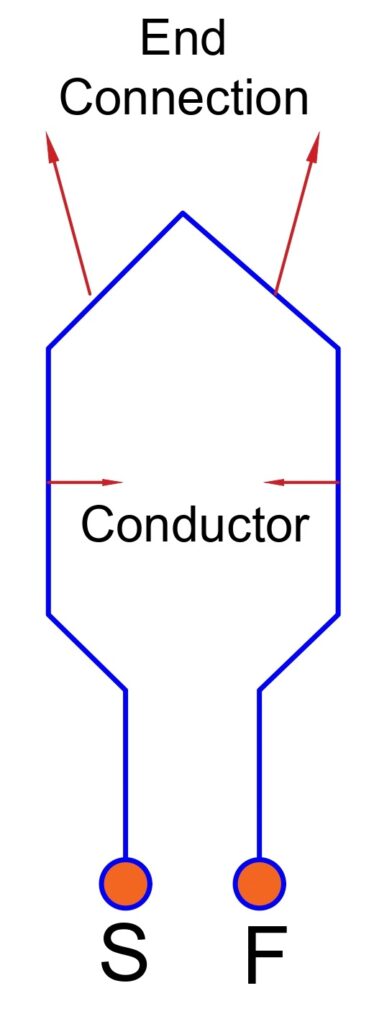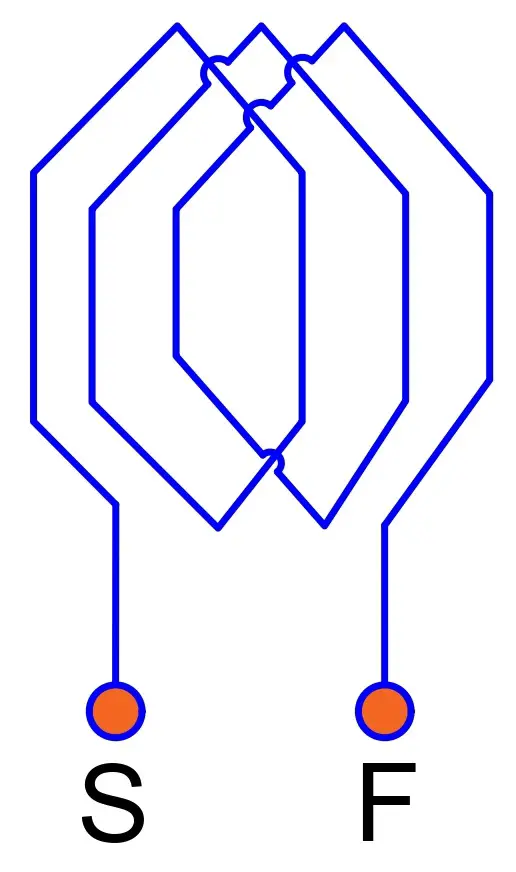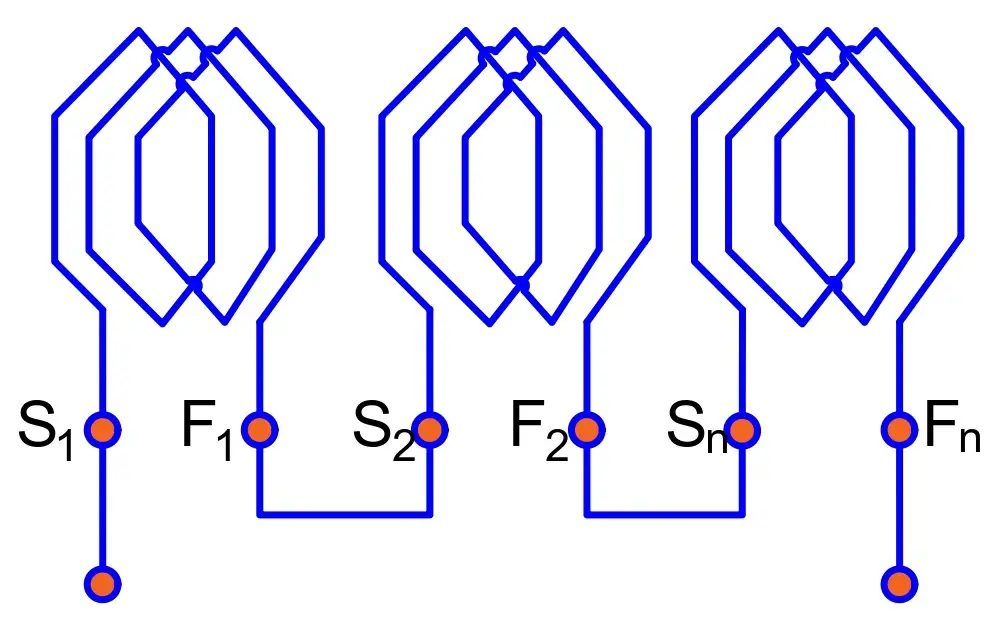Armature winding is the winding in which voltage is induced as the conductors of the coil pass through a magnetic field of the field winding. The armature winding can also produce a magnetic field when voltage is applied to it, interacts with the field winding flux, and causes the armature to rotate. Thus, the armature winding generates torque in motors or the voltage in generators.
Basic Terms Related to Armature Winding
Turns:
Each loop of wire around the core is a turn consisting of two conductors connected by an end connector. The one turn consists of two conductors. The diagram of the turn is shown below.

Coil:
A coil has several turns in the series. The turns of the conductors are connected in series- the end of one turn is attached to the beginning of the next turn, forming a continuous path for the flow of electrical current. The beginning and end of the coil are identified by the symbols (S)-Start and (F)-Finish, respectively. The diagram of the coil is shown below.

Winding
The multiple coils are connected in the series to form a winding. The figure of the armature winding is shown below.

The beginning and end of the turn or coil are identified by the symbols (S), and (F), respectively. “S” and “F” are the abbreviations used to indicate the Start and Finish end of a coil. The Finish end of the first coil is connected to the Start end of the second coil, and the Finish end of the second coil is connected to the Start end of the third coil. All the coils are connected in the series, making a single armature winding, and the same current flow through the winding.
An electrical machine has a certain number of poles, and the coils are placed in the slots of the armature. Therefore, it is important to understand the concept of electrical degrees, pole pitch, and coil pitch when studying electrical machines.
The electrical degree of a P-pole machine can be calculated using the following mathematical expression.

You can calculate the electrical degree of the 4-pole machine using the above formula.

The advantage of using electrical angle notation is that the expressions apply to machines with any number of poles.
The peripheral distance between the centers of adjacent poles on a machine is known as pole pitch or pole span. The pole pitch is always 180 degrees electrical, regardless of the number of poles. The distance between two poles can be calculated using the following mathematical expression.

A coil consists of two sides that are placed in two slots on the stator surface. The distance between these two sides is referred to as the coil-pitch. If the coil pitch equals one pole pitch, it is a Full Pitch Coil. However, if the coil pitch is less than one pole pitch, it is known as a Short Pitch or Fractional Pitch coil.
Great and useful info